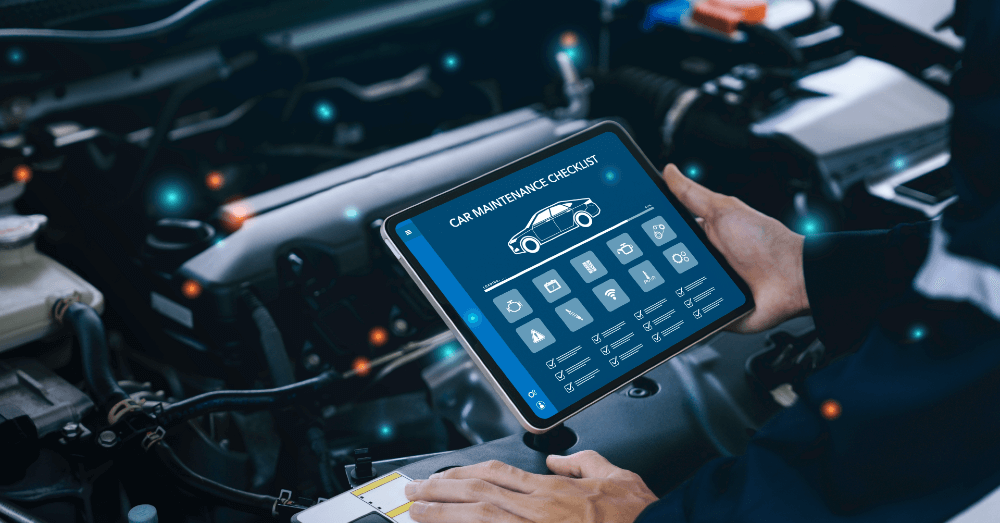Has automotive repair changed and evolved along with the technology included in new cars? Connected cars, using AI, are altering the auto repair world.
Today’s vehicles have more computers and sensors than ever before. For some drivers, this is annoying, but for others, it’s a step in the right direction. Modern vehicles are safer, more comfortable, and have much better drivetrain systems than traditional models without computerization. The connectivity of modern vehicles, along with the use of AI, has led to some interesting developments in the world of auto repair.
Predictive maintenance; the new way of caring for a car
If we all drove exactly the same way, automakers would be exactly correct with the number of miles driven before scheduled maintenance must be completed. That’s not the case. Some people might drive erratically or brake hard, others could use their trucks to haul heavy loads every day, and some people might be conservative drivers who never carry anything in their vehicles. The vast differences in driving habits mean maintenance timelines are an estimate based on traditional driving habits, much more so than a hard rule that must be followed.
Wouldn’t it be great if there was a way to know when a vehicle actually required maintenance or to predict when a part might fail? This is where predictive maintenance comes in. This type of maintenance is the future of auto repair and requires connected car technology. Using these tools, the vehicle systems can determine when services are required and transmit this information to the driver.
Predictive maintenance includes:
- Identification of parts failure before the occurrence
- Calculation of remaining useful life and possible repairs
- Performance measurement of variables like temperature, speed, electrical system, and more
- Lowering costs of operation
Over-the-air updates keep you out of the dealership waiting room
If you have ever sat in the waiting room of your local dealership service center, you understand the time wasted while your vehicle is being worked on. Wouldn’t it be great if some auto repair functions could be handled without a visit to the dealership? Thankfully, some can be.
The advancements in connected cars and technology have brought about over-the-air updates. Tesla was the first to use such tech to send software updates to vehicles via wireless networks. After proving this worked, other automakers have added systems that can be updated using these same methods, which ensures you don’t spend as much time waiting for your vehicle to be updated as you would have in the past.
Evolving diagnostic technologies; faster and more accurate information
Modern vehicles have advanced systems that work together to keep you on the road. They also have more warning lights and indicators than ever before. Auto repair shops don’t have to guess what’s wrong with a vehicle through the process of trial and error. When the check engine light comes on, there’s a diagnostics code that goes along with the problem, telling the mechanic what’s wrong with the vehicle.
Once the mechanic connects the diagnostic equipment to your OBDII port, they will receive the code and understand what’s wrong with the vehicle. This saves time and effort and avoids the chance of the wrong part being replaced.
Fleet management made easier
Fleet managers can monitor and maintain their fleets much more easily using connected cars and AI systems. The data collected through these systems helps managers know which vehicles require maintenance and which are ready to go and available for the day’s work.
The benefits of these systems help fleet managers facilitate fleet and driver management through:
- Real-time fleet location monitoring
- Weight/volume tracking of cargo
- Vehicle performance statistics
- Tracking traffic conditions
- Route management
- Time and driver management
The downside of connected cars for auto repair
The advanced diagnostics systems of new vehicles mean faster diagnosis of problem areas and required repairs, but auto repair shops have become extremely reliant on car systems providing warnings for issues. If a car does not display the check engine light as a warning, the OBDII port will not have a repair code, and most service centers can’t work on the vehicle when this happens. This means if you have an issue with your car, but the check engine light doesn’t come on, most repair shops won’t be able to work on the vehicle.
For the most part, connected cars using AI technology make auto repair and service much easier. There are many advantages to systems that can predict necessary maintenance, send updates over the air, provide advanced diagnostics, and offer better fleet management.
This post may contain affiliate links. Meaning a commission is given should you decide to make a purchase through these links, at no cost to you. All products shown are researched and tested to give an accurate review for you.
